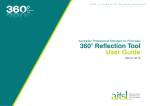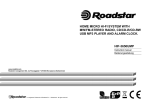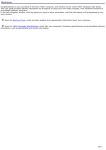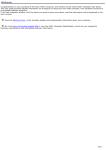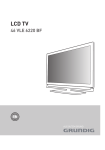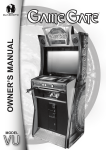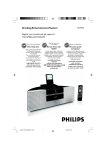Download Grundig MS 240
Transcript
MICRO HİFİ SYSTEM MS 240 EN CONTENTS----------------------------------------------------------------------------------------------------------------------------------3 SET-UP AND SAFETY 4 4 6 7 8 OVERVIEW The hi-fi system controls The back of the device The remote control The hi-fi system displays 9 9 9 9 CONNECTION AND PREPARATION Connecting the loudspeakers Connecting external devices Connecting an MP3 player or a USB memory stick Inserting a memory card Removing the memory card Connecting the headphones Connecting to the mains supply Putting batteries in the remote control 10 10 10 11 11 12 SETTINGS 12 Setting the clock 12 Switch off or on the RDS time synchronisation 12 Tuning and storing radio stations 13 GENERAL FUNCTIONS 13 Switching on and off 13 Automatic shutdown 13 Selecting the input source 13 Adjusting the volume 13 Selecting sound settings 13 Switching the Ultra Bass System on and off 13 Muting 13 Displaying the time 14 TUNER MODE 14 Selecting the tuner input source 14 Selecting presets 14 Stereo/mono reception 14 RDS information 2 ENGLISH 15 CD MODE 15 Selecting the CD input source 15 Inserting and playing CDs 16 Pausing and resuming playback 16 Repeat actual track 16 Selecting another track 16 Searching for a passage within a track 16 Repeating a track (Repeat One) 16 Repeating all tracks of a CD (Repeat All) 16 Repeating all files in an album (MP3/ WMA only) 16 Playing tracks in random order 17 MP3/WMA displays 17 Programming track numbers 18 USB AND SD/SDHC/MMC MODE 18 Playing the contents of an MP3 player or a USB memory stick 18 Playing the contents of an SD/SDHC/ MMC memory card 19 CASSETTE MODE 19 Selecting the cassette input source 19 Playback 19 Fast forward and reverse search 19 Recording onto cassette 20 20 20 20 AUX MODE Listening to an external source Synchro recording Recording from the radio 21 TIMER MODE 21 Timer 21 Sleep Timer 22 22 22 22 22 23 23 24 INFORMATION Cleaning the device Cleaning the CD unit Cleaning the tape drive Technical data Environmental note General information on laser devices Troubleshooting SET-UP AND SAFETY-----------------------------------------------------------------------------------------------Please note the following instructions when setting up the system: Thunderstorms are a danger to all electrical devices. Even if the hi-fi system is switched off, it can be damaged by a lightning strike to the mains. Always disconnect the mains plug during a storm. 7 The hi-fi system is designed for the playback of audio signals. Any other use is expressly prohibited. 7 If you want to set up the hi-fi system on wall shelves or in cupboards, please ensure that it is adequately ventilated. There must be at least 10 cm of space at the side, above and behind the hi-fi system. 7 Do not cover the hi-fi system with newspapers, table cloths, curtains, etc. 7 When setting up the hi-fi system, remember that furniture is often coated with various types of varnish and plastic, which often contain chemical additives. These additives may cause corrosion to the feet of the unit. This may leave stains on the surface of the furniture which can be difficult or impossible to remove. 7 Excessive sound pressure from the earphones or headphones can cause hearing loss. 7 Note: 7 Do not connect any other equipment while the device is switched on. Switch off the other devices as well before connecting them. Only plug the device into the mains socket after you have connected the external devices. Make sure the power plug is freely accessible. 7 If the hi-fi system is exposed to sudden changes in temperature, for example when taken from the cold into a warm room, wait at least two hours before using it. 7 The hi-fi system is designed for use in dry rooms. If you do use it outdoors, make sure it is protected from moisture such as dripping or splashing water. 7 Only use the hi-fi system in a moderate climate. 7 Do not place the hi-fi system close to heating units or in direct sunlight, as this will impair cooling. 7 Do not place any vessels containing liquids, such as vases, on the hifi system. Do not insert any foreign objects in the CD compartment. 7 Do not place any objects such as burning candles on the hi-fi system. 7 Do not open the hi-fi system casing under any circumstances. Warranty claims are excluded for damage resulting from improper handling. 7 ENGLISH 3 OVERVIEW---------------------------------------------------------------------------------------------------------------------------------The hi-fi system controls 8 U MS 235 SOURCE SOURCE + PRESET – PRESET SD CARD UBS UBS VOLUME + VOLUME – USB USB SD CARD DISPLAY OPEN • e 7 The front of the device 8 SOURCE + PRESET - SD CARD U witches the hi-fi system to and S from standby mode. Switches on the system. Selects the respective sound source for CD, TUNER (FM), SD, USB, CASS and AUX. In radio mode: selects a preset radio station. In CD/USB/SD mode: selects the album. Card slot for inserting a memory card (SD, SDHC, MMC). H eadphone socket for connecting a stereo headphone set with a jack plug (ø 3.5 mm). This automatically switches off the loudspeakers. ENGLISH 4 II UBS Switches the ultra bass system on and off. + VOLUME - Adjusts the volume. USB DISPLAY USB socket for connecting MP3 player, a USB memory stick or a card-reading device. Display of the hi-fi system, for more details, please see the section “The hi-fi system displays”. Under the front flap (in tape mode) ● e 3 4 7 II 4 3 Starts recording. tarts playback. S Revinds the tape to the beginning. Fast forwards the tape to the end. Ends playback/recording of the tape and opens the tape compartment. Pauses recording and playback. OVERVIEW---------------------------------------------------------------------------------------------------------------------------------MS 235 E UBS VOLUME SD CARD USB PUSH OPEN PROG 3 7 / On the top PROG 3 4 4 7/ In tuner mode: stores radio stations. In CD/USB/SD mode: programmes tracks and reviews the playlist. In tuner mode: tunes radio stations; press briefly to change the frequency backwards or forwards in steps. In CD/USB/SD mode: skips to the beginning of the current/ next track. Fast searches back and forward within a track. In clock/timer mode: adjusts the hours and minutes for the clock/timer function. REPEAT In tuner mode: switches between FM stereo and mono reception. In CD/USB/SD mode: stops the playback or erases a CD programme. In CD /USB/SD mode: starts and pauses playback. REPEATRepeats a track/disc/album/all programmed tracks. PUSH Opens or closes the CD compartment. ENGLISH 5 OVERVIEW---------------------------------------------------------------------------------------------------------------------------------The back of the device FM Antenna AUX In LEFT +/– RIGHT +/– Ü FM Antenna Wire antenna for FM reception. AUX In udio signal input for connecting A an external source (ø 3.5 mm). LEFT+/– T erminals for connecting the loudspeaker cable, left channel. RIGHT+/– T erminals for connecting the loudspeaker cable, right channel. Ü Mains cable. Note: 7 6 ENGLISH The only way to fully disconnect the hi-fi system from the mains is to pull out the plug. OVERVIEW---------------------------------------------------------------------------------------------------------------------------------The remote control CD SLEEP USB SD CARD TUNER AUX CASS DISPLAY Switches the loudspeakers of the hi-fi system to mute and back on again. 8 Switches the hi-fi system to standby mode and from standby mode to the last input source selected. CDSelects the sound source for CD mode. USB elects the sound source for the S USB mode. SD CARD S elects the sound source for the SD mode. TUNERSelects the sound source for Tuner mode. TIMER ON/OFF Switches the timer on or off. TIMER SETSets the timer. AUX Selects the sound source for external devices. CASSSelects the sound source for Cass mode. EQ Selects the preset sound settings ROCK, POP, JAZZ and CLASSIC. UBS Switches the ultra bass system on and off. In tuner mode: selects a preset radio station. In CD/USB/SD mode: selects the album. ‒ + Adjusts the volume. In CD/USB/SD mode: starts and pauses playback. SLEEP Setting the sleep time. DISPLAY In tuner mode: changes the RDS informations. In CD/USB/SD mode: displays the current track number and remaining time during playback. 56 In CD/USB/SD mode: skips to the beginning of the current/previous track. In stand by/timer mode: adjusts the hours and minutes for the clock/ timer function. 3 4 In tuner mode: tunes radio stations manually; press briefly to change the frequency backwards or forwards in steps. In CD/USB/SD mode: starts the fast searches back and forward within a track. PROG In tuner mode: stores radio stations. In CD/USB/SD mode: programmes tracks and reviews the programme. In stand by mode: sets the clock. REP In tuner mode: starts the PTY search. In CD/USB/SD mode: repeats a track/disc/album/all programmed tracks. RAND Plays tracks in random order. 7/ In tuner mode: switches between mono and stereo reception. In CD/USB/SD mode: stops playback. ENGLISH 7 OVERVIEW---------------------------------------------------------------------------------------------------------------------------------The hi-fi system displays The CD source is selected. The USB source is selected. The CARD source is selected. The TUNER source is selected. The AUX source is selected. The CASS source is selected. RAND In CD/USB/SD mode: all tracks are played in random order. PROG In CD/USB/SD mode: tracks are programmed. In tuner mode: preset is selected. 8 In CD/USB/SD mode: playback. Flashes in pause. REP In CD/USB/SD mode: current track is repeated. REP ALL In CD/USB/SD mode: all tracks are repeated. ALBUM In CD/USB/SD mode: all files in the current album are repeated. ! In tuner mode: a stereo station is being received. 8 ENGLISH Timer is activated. In tape mode: recording. T he ultra bass system is activated. POP/CLASSIC T he sound setting is selected JAZZ/ROCK using »EQ« on the remote control. T he hi-fi system is receiving an RDS station. SLEEP The sleep timer is activated. PM In clock mode: shows PM if 12H is selected. FM In tuner mode: FM station is received. MHz In tuner mode: the frequency of station in MHz. CONNECTION AND PREPARATION---------------------------------------Connecting the loudspeakers Connecting an MP3 player or a USB memory stick The hi-fi system supports most MP3 players and USB memory sticks. Caution: 7 The hi-fi system must be switched off while the USB connection is being made. If it is not switched off, data can be lost. MS 235 1Insert the wires of the loudspeaker cable into the terminals »RIGHT+/–« and »LEFT+/–«. – Connect the cables marked in red to the red terminals. SOURCE UBS PRESET VOLUME SD CARD USB Connecting external devices 1Switch off the hi-fi system by pressing »8«. 2Connect the USB interface of the MP3 player to the »USB« socket on the hi-fi, using a standard USB cable; OPEN or insert the USB plug of the USB memory stick in the »USB« socket on the hi-fi system. Note: 7 Switch the hi-fi system off before you connect external devices. 1 Use standard audio adapter to connect the audio outputs of the external device to the »AUX In« (ø 3.5 mm) socket on the back of the hi-fi system. Notes: 7 To remove the MP3 player or the USB memory stick, switch off the hi-fi system and pull out the cable for the data medium. 7 The USB socket on the hi-fi system does not support a connection for a USB extension cable and is not designed for directly connecting to a computer. ENGLISH 9 CONNECTION AND PREPARATION---------------------------------------Inserting a memory card Connecting the headphones The hi-fi system supports SD/SDHC and MMC memory cards. Caution: 7 The hi-fi system must be switched off while the memory card is being inserted. If it is not switched off, data can be lost. MS 235 SOURCE UBS PRESET VOLUME SD CARD USB MS 235 SOURCE UBS PRESET VOLUME 1Insert the headphone plug (ø 3.5 mm) into the » U « socket on the front side of the hi-fi system. – The loudspeakers of the hi-fi system are switched off. OPEN SD CARD USB 1Switch off the hi-fi system by pressing »8«. 2Insert the card carefully into the »SD« card slot until it latches into place. OPEN Notes: 7 Do not use excessive force when inserting the memory card. Only apply slight pressure. The memory cards are resistant to dirt and moisture, but may only be inserted into the hi-fi system in a dry and clean condition. 7 Never remove memory cards during operation. This can damage the memory card. This type of damage will invalidate your warranty. 7 Removing the memory card Caution: 7 The hi-fi system must be switched off while the memory card is removed. If it is not switched off, data can be lost. 1Remove the memory card from the card slot by pressing the card inwards slightly until the latch is released. Then pull out the card. 10 ENGLISH Note: 7 Excessive sound pressure from the earphones or headphones can cause hearing loss. CONNECTION AND PREPARATION---------------------------------------Connecting to the mains supply Notes: 7 Check that the mains voltage on the type plate (on the back of the hi-fi system) corresponds to your local mains supply. If this is not the case, contact your specialist dealer. 7 Putting batteries in the remote control 2 Before connecting the AC power cord to the wall socket, ensure that all other connections have been made. 1 3 1Open the battery compartment by pressing down on the catch and then remove the lid. 2Observe the polarity marked on the base of the battery compartment when inserting the batteries (micro batteries, 2 x 1.5 V, R 03 / UM 4/AAA). 1Plug the power cord into the wall socket. Caution: 7 The hi-fi system is connected to the mains with the power cord. Pull out the power plug if you want to completely disconnect the hi-fi system from the mains. Make sure the power plug is easily accessible during operation and not hindered by other objects. 7 3Close the lid of the battery compartment. Notes: 7 Do not expose the batteries to extreme heat, caused for example by direct sunlight, heaters or fire. Remove the batteries when they are flat or when you know that the hi-fi system will not be used for a long period of time. The manufacturer accepts no liability for damage caused by leaking batteries. 7 Environmental note: 7 Batteries, including those which do not contain heavy metal, should not be disposed of with household waste. Always dispose of used batteries in accordance with local environmental regulations. ENGLISH 11 SETTINGS---------------------------------------------------------------------------------------------------------------------------------------Setting the clock Tuning and storing radio stations The first time you connect the hi-fi system to the mains, it switches to standby. You can store up to 30 stations in the FM frequency range on presets. 1In standby mode, press and hold »PROG« on the remote control for 2 seconds. – Display: »12 H« or »24 H«. 2Press »3« or »4« on the hi-fi system or »5« or »6« on the remote control to select the hour format (12 or 24 hours) and confirm with »PROG«. – Display: The clock digits for the hours flash. 3Select the hours with »3« or »4« on the hi-fi system or with »5« or »6« on the remote control and confirm with »PROG«. – Display: The clock digits for the minutes flash. 4Select the minutes with »3« or »4« on the hi-fi system or with »5« or »6« on the remote control and confirm with »PROG«. – Display: the current time. Switch off or on the RDS time synchronisation Note: 7 For the best FM (VHF) reception, it is sufficient to direct the wire antenna accorddingly. Programming radio stations 1Switch on the hi-fi system from standby mode by pressing »8« or »SOURCE«. 2Select the input source TUNER by pressing »SOURCE« on the hi-fi system or by pressing »TUNER« on the remote control. 3Set the radio station by briefly pressing »3« or »4« repeatedly. – Display: the frequency changes in steps of 50 kHz; or press and hold down »3« or »4« until the frequency changes to rapid run-through. Some RDS stations transmit an RDS time signal. If the selected RDS station transmits time information, the time is updated automatically, if you have set »CT ON«. This takes about five minutes. 4To store the radio station, press »PROG«, select preset by pressing »+ PRESET -« on the hi-fi system or by pressing » « or » « on the remote control and confirm with »PROG«. 1Switch on the hi-fi system from standby mode by pressing »8« or »SOURCE«. 5To search and save more radio stations, repeat steps 3 to 4. 2 Select the input source TUNER with »SOURCE« on the hi-fi system or with »TUNER« on the remote control. 3Press and hold »DISPLAY« on the remote control for 2 seconds. – Display: »CT ON« flashes. 4Switch the RDS time synchronisation off or on with with »3« or »4« on the hi-fi system or »5« or »6« on the remote control. Notes: 7 The current time is displayed in standby mode – with reduced brightness. The time must be reset after a power failure or after disconnecting from the mains. 7 12 ENGLISH GENERAL FUNCTIONS---------------------------------------------------------------------------------------Switching on and off Selecting sound settings The only way to disconnect the hi-fi system from the mains supply is to pull out the plug from the wall socket. You can choose between the preset sound settings FLAT, CLASSIC, ROCK, POP and JAZZ. 1Switch on the hi-fi system from standby mode by pressing »8« or »SOURCE« on the hi-fi system. – The system switches to the last selected source. Note 7 If you use the remote control, you can press »8« or one of the buttons »CD«, »USB«, »SD«, »TUNER«, »CASS« or »AUX«. 2Switch the hi-fi system to standby mode by pressing »8«. – Display: the current time. Automatic shutdown If the device is in the “Stop“ position or on socket »AUX In« is no audio signal available, the device switches automatically to Stand-by mode after 15 minutes. For further using switch on the device again. Selecting the input source 1Select the input source (TUNER, CD, USB, SD, CASS, AUX ) with »SOURCE« on the hi-fi system; or by using the remote control, press one of the buttons »CD«, »USB«, »SD«, »TUNER«, »CASS« or »AUX«. – Display: » CD«, » USB«, » CARD« » 100.60« (frequency of the radio station), » CASS« or » AUX«. 1Select the sound setting using »EQ« on the remote control. – Display: »FLAT«, »CLASSIC«, »ROCK«, »POP« or »JAZZ«. Switching the Ultra Bass System on and off 1Switch the Ultra Bass System on and off by pressing »UBS« on the remote control or hi-fi system. – Display: » «, if the UBS is activated, disappears if function is deactivated. Muting You can switch the hi-fi speakers to and from mute mode with this function. 1Activate mute with » « on the remote control. – Display: »MUTING«. 2Deactivate mute with » « on the remote control. – Display: »MUTING« disappears. Displaying the time 1Display the time by pressing »DISPLAY«. 2Press »DISPLAY« again to switch off the time. Adjusting the volume 1Adjust the volume with »+ VOLUME -« on the hi-fi system; or »+« and »–« on the remote control. – Display: briefly »VOL« from »0« to »31« then »MAX«. ENGLISH 13 TUNER MODE ---------------------------------------------------------------------------------------------------------------------Selecting the tuner input source Viewing RDS information 1Select the TUNER input source with »SOURCE« on the hi-fi system or »TUNER« on the remote control. – The most recently selected station is played (Last Station Memory). – Display: » « and station name or the frequency. If an RDS station is being received, information can be opened up in the display. Selecting presets 1Press »+ PRESET –« on the hi-fi system or press » « or » « on the remote control. 1Press »DISPLAY« repeatedly to cycle through the information. BAY 3 (example) POP M (example) Displays the name of the radio station being listened to. Displays the type of station being listened to, e.g. Pop, Classic, News, etc. Text If no station type code is transmitted, »NO PTY« appears on the display. Displays the message about the station being listened to as ticker text (if offered). Current time. Stereo/mono reception If the hi-fi system is receiving a stereo broadcast, »!« appears in the display. If the signal from the stereo channel is weak, you can improve the sound quality by switching to mono reception. 1Press »7/!« to switch to mono reception. – Display: »!« disappears. 2To switch back to stereo, press »7/!« again. – Display: »!«. RDS information RDS (Radio Data System) is an information system which is transmitted additionally by most FM stations. When the hi-fi system receives an RDS station, the station name appears in the display, for example »FANTASY« and » «. Notes: 7 It may take some time before all the RDS information is available. 7 GRUNDIG has no influence on the correctness of this information. Searching for RDS stations 1Search for the RDS station by pressing »3« or »4« repeatedly until an RDS station is received and » « appears in the display. – If the reception is strong enough, the station name appears after a short time. 14 ENGLISH 18:00 (example) 97.90 (example) Displays the waveband and the frequency of station being listened to. RDS time synchronisation Some RDS stations transmit a time signal. If reception is good, the time information will update the time if you have selected the »CT ON« option during the time setting, refer to "Setting the clock„ at the "SETTINGS" section. Time synchronisation can take several minutes, and even with good reception the accuracy depends on the time signal being transmitted. The automatic time setting is always activated when the device is switched from standby to tuner mode and receives a RDS station. Station types search (PTY) 1Press »REP« to call up the station type search. 2Repeatedly press »REP« and start the type search with »3« or »4«. – The search stops once a station of the selected type is found. 3Press »REP« to stop the type search with . CD MODE---------------------------------------------------------------------------------------------------------------------------------------The hi-fi system is suitable for music CDs bearing the logo shown here (CD-DA), and for CD-Rs (CD-Recordables) and CD-RWs (CD-Rewritables) with audio data or MP3 and WMA formats. Not suitable are CD-ROM, CD-I, CDV, VCD, DVD or computer CDs. In MP3/WMA mode, the terms “album” and “file” are very important. “Album” corresponds to an album on a PC, “file” to a title on a PC or CD-DA track. When burning CD-R and CD-RWs with audio files, various problems may arise which could lead to problems with playback. This can be caused by faulty software or hardware settings or by the CD being used. Should such problems arise, contact the customer services of your CD burner or software manufacturer or look for relevant information, for example on the Internet. When you are making audio CDs, observe all legal guidelines and ensure that the copyright of third parties is not infringed. Always keep the CD compartment closed to prevent dust from collecting on the laser optics. Do not attach adhesive labels to CDs. Keep the surfaces of CDs clean. You can play standard 12 cm CDs as well as 8 cm CDs on your hi-fi system. An adapter is not necessary. Selecting the CD input source 1Press »SOURCE« on the hi-fi system repeatedly or press »CD« on the remote control. – Display: » CD«. – If there is no CD in the compartment, »NO DISC« appears in the display after a short time. – If a CD has been inserted, it is scanned and »READ« flashes in the display. Inserting and playing CDs Warning 7 The lens of the CD player should never be touched. 1Press »PUSH « on the hi-fi system to open the CD compartment. – Display: »OPEN«. 2Insert your CD in the compartment with its label facing upwards. 3Close the lid of the CD compartment by pressing »PUSH « on the hi-fi system. – Display: »READ«, the CD is being scanned and then the total number of tracks is shown. – Display in MP3/WMA mode: total number of albums and files. – Display in CD-DA mode: the total playing time. 4Press » « to start playback. – Display in MP3/WMA mode: the number of the current file, then the track name and the elapsed playing time of the track. – Display in CD-DA mode: the number of the current track and the elapsed playing time of the track. Notes: 7 To change an album in MP3/WMA mode, press » « or » « on the remote control. To select additional title information, press »DISPLAY«. 7 5Press »7/ « to stop playback. Notes: CD playback also stops when: 7 the CD compartment is opened; 7 the disc has reached the end; 7 you select another source: TUNER, CASS, CARD, USB or AUX; 7 you select standby; 7 you press the tape deck »8« button. ENGLISH 15 CD MODE---------------------------------------------------------------------------------------------------------------------------------------Pausing and resuming playback 1Press » « during playback to pause. – In the display, the elapsed playing time flashes. 2Continue playback by pressing » «. Repeat actual track 1 During playback, press »3« on the hi-fi system or press »5« or »6« on the remote control. – Playback starts from the beginning. Selecting another track 1During playback, press »3« or »4« on the hi-fi system or »5« or »6« on the remote control once or repeatedly until the number of the desired track appears in the display. – Playback of the selected track starts automatically. Note: 7 You can also select tracks in stop mode. However, you must then start playback of the track with » «. Searching for a passage within a track 1 During playback, press and hold down »3« or »4«. – Playback is at high speed and without volume. 2Release »3« or »4« when the passage has been found. – Playback continues. Repeating a track (Repeat One) 1During playback press »REP« once on the remote control or »REPEAT« on the hi-fi system during playback. – Display: »REP«. – The current track is repeated. 2 To quit this function, press »REP« on the remote control or »REPEAT« on the hi-fi system repeatedly until »REP« disappears from the display. 16 ENGLISH Repeating all tracks of a CD (Repeat All) 1During playback, press »REP« on the remote control or »REPEAT« on the hi-fi system twice. – Display: »REP ALL«. – All the tracks on the CD are played back repeatedly. 2To quit this function, press »REP« on the remote control or »REPEAT« on the hi-fi system repeatedly until »REP ALL« disappears from the display. Repeating all files in an album (MP3/WMA only) 1During playback, press »REP« on the remote control repeatedly until »REP ALBUM« appears on display. – Display: »REP ALBUM«. – All the files on the current album are played back repeatedly. 2To quit this function, press »REP« on the remote control repeatedly until »REP ALBUM« disappears from the display. Playing tracks in random order 1During playback press »RAND« on the remote control. – Display: »RAND«. – Random playback starts automatically. – All tracks on the CD are played back once in random order. 2To quit this function, press »RAND« again on the remote control during playback. – Display: »RAND« disappears. Notes: 7 The random cannot be combined with programme. 7 The random or repeat functions cannot be used simultaneously. CD MODE---------------------------------------------------------------------------------------------------------------------------------------MP3/WMA displays Programming track numbers You are provided with information of the artist, album and title if such information is stored on the CD, USB or SD (ID3 tag and ticker text). Programme in the stop position to select and store your disc tracks in the desired sequence. If youlike, store any track more than once. Up to 32 tracks can be stored in the memory. 1Press »DISPLAY« on the remote control repeatedly to cycle through the information. Selecting and storing tracks 1Press »PROG« in the stop position. – Display: »PROG« flashes, and »01« is displayed briefly. 2Press »3« or »4« on the hi-fi system or »5« or »6« on the remote control to select your desired track number and confirm it with »PROG«. – Display: »PROG« flashes, and »02« is displayed briefly. Note: 7 If you used a MP3/WMA file, select first the album with »5« or »6« on the remote control and confirm with »PROG«, then select the desired track number and confirm it with »PROG«. 3Repeat step 2 to select and store all desired tracks. Playing the playlist 1Start the playback with » «. – Display: » 4« and »PROG«. – The playback starts with the first track. 2Stop playback with »7/ «. 3Start playback again with » «. Deleting the programme 1Delete the programme by: opening the CD compartment; or selecting another source. – »PROG« disappears from the display. ENGLISH 17 USB AND SD/SDHC/MMC MODE----------------------------------------------For MP3/WMA mode with MP3 player, USB memory stick or SD/SDHC/MMC memory card, the same playback and search functions are available as for CD mode (see CD Mode section). Playing the contents of an MP3 player or a USB memory stick Notes: 7 The USB socket of this device is a standard socket. Due to rapid developments in technology and new manufacturers appearing every day, the compatibility of USB memory sticks can only be partially guaranteed. 7 1Switch off the hi-fi system with »8«. 2Connect the USB interface of the MP3 player to the »USB« socket on the hi-fi system using a standard USB cable; 7 or insert the USB plug of the USB memory stick in the »USB« socket on the hi-fi system. 7 3Switch on the hi-fi system with »8«. 4Select the USB input source with »SOURCE« on the hi-fi system or »USB« on the remote control. – Display: » USB«, the hi-fi system scans the contents of the USB, »READ« flashes. After a short time the total number of albums and files appears. – If there is no USB memory stick inserted, »NO USB« appears in the display. 5Press » « to start playback with the first file of the first album. – Display: elapsed playing time and information of the file appear in the display. Note: 7 To select an album, press »+« or »–« on the hi-fi system or » « or » « on the remote control, for selecting a file press »3« or »4« on the hi-fi system or »5« or »6« on the remote control. Start playback by pressing » «. 6Stop playback with »7/ 18 ENGLISH «. 7 The USB socket on the hi-fi system does not support a connection for a USB extension cable and is not designed for directly connecting to a computer. If USB operation is impaired or is not possible, this does not indicate a malfunction of the hi-fi system. Bi-directional data transfer as defined for ITE devices in EN 55022/EN 555024 is not possible. USB transfer is not in itself an operating mode. It is only an additional function. Caution: 7 Never remove USB devices during operation. This can damage the USB device and the hi-fi system. This type of damage will invalidate your warranty. Playing the contents of an SD/ SDHC/MMC memory card 1Switch off the hi-fi system with »8«. 2Insert the card carefully with its label side facing upwards and gold contacts first into the »SD« card slot on the hi-fi system until it latches into place. 3Switch on the hi-fi system with »8«. 4Select the CARD input source with »SOURCE« on the hi-fi system or »SD CARD« on the remote control. – Display: » CARD«, the hi-fi system scans the contents of the memory card, »READ« flashes. After a short time the total number of albums and files appears. – If there is no memory card inserted, »NO CARD« appears in the display. USB AND SD/SDHC/MMC MODE----------------------------------------------5Press » « to start playback with the first file of the first album. – Display: elapsed playing time and information of the file appear in the display. Note: 7 To select an album, press »+« or »–« on the hi-fi system or » « or » « on the remote control, to select a file press »3« or »4« on the hi-fi system or »5« or »6« on the remote control. Start playback by pressing » «. 6Stop playback with »7/ «. Caution: 7 Never remove memory cards during operation. This can damage the memory card and the hi-fi system. This type of damage will invalidate your warranty. CASSETTE MODE -----------------------------------------------------------------------------------------------------------Selecting the cassette input source 1 Select the cassette input source with »SOURCE« on the hi-fi system or »CASS« on the remote control. – Display: »CASS«. Fast forward and reverse search 1In stop mode, press »3« or »4«. – »3« rewinds to the beginning, »4« fast forwards to the end. Recording onto cassette Playback 1Open the front flap which is marked with »OPEN« on the front panel. J 2Press »7 « to open the tape compartment. 3Insert a cassette in the compartment with the open side facing downwards and the full reel on the left side and close the compartment. 4Press »8« to start playback. – The button is automatically released at the end of the tape, except if pause function has been activated. 5To pause playback press »II« and resume playback by pressing »II« again. J 6End playback with »7 «. Note: 7 The source cannot be changed while playing or recording a cassette. Erase protection Each new recording writes over the previous recording. You can protect your recordings against inadvertent deletion by breaking the protection tab in the opening in the spine of the tape. Purchased recordings on music tapes are already protected against accidental deletion. If you wish to record on a protected tape, seal the opening with adhesive tape. Notes: 7 Only use NORMAL-type cassettes (IEC I) for recording. CHROME (IEC II) or METAL (IEC IV) tapes are not suitable. 7 The Ultra Bass System does not affect recording. ENGLISH 19 CASSETTE MODE -----------------------------------------------------------------------------------------------------------Synchro recording Recording from the radio 1Press »SOURCE« on the hi-fi system repeatedly or press »CD«, »USB« or »SD CARD« on the remote control. 1Select the TUNER input source with »SOURCE« on the hi-fi system or »TUNER« on the remote control. – Display: » « and the frequency. 4Insert a suitable cassette in the compartment and close the compartment. 5Press » « to start recording. – Playback of the file starts automatically after 7 seconds. 6To pause, press »II«. Press again to resume. J 7To stop recording, press »7 «. 3Press »7 « to open the cassette compartment. 4Insert a suitable cassette in the compartment and close the compartment. 5Press » « to start recording. 6To pause, press »II«. Press again to resume. 7To stop recording, press »7 «. J J 3Press »7 « to open the cassette compartment. 2To select the preset press »+ PRESET –« on the hi-fi system or press » « or » « on the remote. J 2Insert a disc, connect the MP3 player or insert the memory card and if desired, select the programme track numbers. AUX MODE--------------------------------------------------------------------------------------------------------------------------------Listening to an external source You can listen to the sound of the connected external device (e.g. a MP3 player) through your system’s speakers. 1Select the AUX source with »SOURCE« on the hi-fi system or » AUX« on the remote control. – Display: » « and »AUX«. 2Use a standard audio adapter (not supplied) to connect »AUX In« socket (ø 3.5 mm ) on the back of the hi-fi system to an »AUDIO OUT« or » U « headphone socket on an external equipment (such MP3 player). 20 ENGLISH TIMER MODE--------------------------------------------------------------------------------------------------------------------------Your hi-fi system has two timer modes: – The timer, which switches the hi-fi system on at the set time, wakes you with the input source you selected and then switches off. – The sleep timer, which switches the hi-fi system off at a preset time. Notes 7 The settings for the Timer mode can only operated with the buttons on the remote control. The time must be set on the hi-fi system. 7 When this setting is being made, if no button is pushed for more than 10 seconds, the hifi system will end the process automatically. You then have to start again. 7 Timer Setting the timer 1 In standby mode, press and hold »TIMER SET« on the remote control. – Display: »ON TIME« appears, then the clock digits for the hours flash. 2Setting the switch on time, press »5« or »6« to set the hours sand confirm with »TIMER SET«. Press »5« or »6« to set the minutes and confirm with »TIMER SET«. – Display: »OFF TIME« appears, then the clock digits for the hours flash. 3 Setting the switch off time, press »5« or »6« to set the hours and confirm with »TIMER SET«. Press »5« or »6« to set the minutes and confirm with »TIMER SET«. – Display: the source appears. 5Select the desired volume with »5« or »6«. Confirm with »TIMER SET«. – Display: » «. – The timer is now set and activated. Activating and deactivating the timer 1In standby or during playback, press »TIMER ON/OFF« on the remote control once. – Display shows » « if activated, and disappears if deactivated. Sleep Timer Setting the sleep timer 1Switch on the hi-fi system from standby by pressing »8 «. 2Open the function with »SLEEP«. – Display: »SLP 90« and »SLEEP« appears. 3Set the switch-off time (»90«, »80« till »10«, »OFF«) by pressing »SLEEP«. – Display: briefly, for example »SLP 30«, then the selected input source and »SLEEP«. – The hi-fi system switches off after the selected time has elapsed. Ending the sleep timer prematurely 1To switch off the sleep timer prematurely, keep pressing »SLEEP« on the remote control until »OFF« appears and »SLEEP« disappears in the display; or switch the hi-fi system to standby mode by pressing »8 «. 4 Select the desired sound source (TUNER, CD, USB or SD) with »5« or »6«. Confirm your desired mode with »TIMER SET«. – Display: the volume appears. Note: 7 If CD/USB/SD source is selected and there is an error, TUNER will be selected automatically. ENGLISH 21 INFORMATION-----------------------------------------------------------------------------------------------------------------Cleaning the device Pull out the power cord from the wall socket. Clean the device by using a soft cloth slightly moistened with a mild detergent solution. Do not use a solution containing alcohol, spirits, ammonia or abrasives. Cleaning the CD unit clean the laser optics. If the device is unable to scan CDs perfectly, use a standard, commercially available cleaning CD to Other cleaning methods may damage the laser optics. Use a lint-free cloth for cleaning the CD and always wipe it from the inside out in a straight line. Do not use cleaning agents for conventional vinyl discs, nor any solvents or abrasive cleaners. Cleaning the tape drive To ensure good recording and playback quality, clean the heads (A), the capstan(s) (B), and pressure roller(s) (C) after every 50 hours of tape operation. Use a cotton swab slightly moistened with cleaning fluid or alcohol. You can also clean the heads by playing a cleaning tape once. Technical data This device is noise-suppressed according to the applicable EU directives. This product fulfils the European directives 2004/108/EC, 2006/95/EC, 2009/125/EC and 2011/65/EU. The type plate is located on the back of the hi-fi system. 22 ENGLISH System Power supply Operating voltage: 230 V~ Mains frequency: 50/60 Hz Max. power consumption: 25 W Power consumption in standby:≤ 1 W Amplifier unit Output power: 2 x 5 W Impedance of loudspeakers: 8 Ω Signal to Noise ratio: ≥ 65 dBA Receiver unit Reception range: FM 87,5 ... 108,0 MHz CD unit Frequency response: Signal to Noise ratio: 100 Hz ... 18 kHz 65 dBA MP3/WMA features Albums and files: Max. 999 albums and 9999 files per CD File system/file management: ISO 9660 Level 1 compatible USB USB 2.0 compatible FAT 32/16 Tape unit Frequency response: Signal to Noise ratio: 125Hz ... 8 kHz 45 dBA Dimensions and weight Device dimensions: W x H x D 150 x 235 x 203 mm Device weight: 2,4 kg Loudspeaker dimensions: W x H x L 140 x 235 x 136 mm Loudspeaker weight: 1,05 kg Technical and design modifications reserved. INFORMATION-----------------------------------------------------------------------------------------------------------------Environmental note This product has been manufactured with high quality parts and materials which can be reused and are suitable for recycling. Therefore, do not dispose the product with normal domestic waste at the end of its service life. Take it to a collection point for the recycling of electrical and electronic equipment. This is indicated by this symbol on the product, in the operating manual and on the packaging. Please consult your local authorities to learn the nearest collection point. Help protect the environment by recycling used products. General information on laser devices This device is a CLASS 1 LASER PRODUCT. This means that the laser is designed in such a way as to ensure that the maximum permissible emission value cannot be exceeded under any circumstances. CLASS 1 LASER PRODUCT Caution: If operating devices or methods other than those specified here are employed, it may lead to dangerous exposure to emissions. This device emits laser radiation. Because of the danger of eye injuries, the unit may only be opened or serviced by trained personnel. If settings other than those stated here are used or other procedures are carried out, this may lead to dangerous exposure to radiation. ENGLISH 23 INFORMATION-----------------------------------------------------------------------------------------------------------------Troubleshooting Not every kind of sound interference is caused by a defect in your hi-fi system. Cables that have accidentally been disconnected, damaged CDs and flat batteries for the remote control will impair functioning. Problem “NO DISC” is displayed. Radio reception is poor. Recording or playback cannot be made. The system does not react when buttons are pressed. Sound cannot be heard or is of poor quality. The left and right sound outputs are reversed. The remote control does not function properly. The time is not working. If the following measures do not resolve the problem satisfactorily, please visit www.grundig.com, product range: hi-fi, micro CD stations or contact your specialist dealer. Possible cause Insert a disc. Check if the disc is inserted upside down. Wait until the moisture condensation at the lens has cleared. Replace or clean the disc, see “INFORMATION”. Use a finalized CD-RW or CD-R. If the signal is too weak, adjust the antenna or connect an external antenna for better reception. Increase the distance between the Mini HiFi System and your TV. Clean deck parts, see “INFORMATION”. Use only NORMAL (IEC I) tape. Apply a piece of adhesive tape over the missing tab space. Remove and reconnect the AC power plug and switch on the system again. Adjust the volume. Disconnect the headphones. Check that the speakers are connected correctly. Check if the stripped speaker wire is clamped. Check the speaker connections and location. Select the source (CD or TUNER, for example) before pressing the function button. Reduce the distance between the remote control and the system. Insert the batteries with their polarities (+/– signs) aligned as indicated. Replace the batteries. Point the remote control directly towards the IR sensor. Set the clock correctly. Press »TIMER ON/OFF« to switch on the timer. If recording or tape dubbing is in progress, stop recording. Power has been interrupted or the power cord has been disconnected. Reset the clock/timer. Faulty software or hardware settings during burning or the CD itself. Check the components of your CD burner/software or change the CD being used. If there is a defective or invalid track or file in the current playing folder, then the device switches to another folder. The Clock/Timer setting is erased. CD-Rs or CD-RWs are not played back, or are played back incorrectly. While playing a track, the device switches to another folder. Delete the defective file from the folder. 24 ENGLISH Grundig Intermedia GmbH Beuthener Strasse 41 90471 Nürnberg www.grundig.com 72011 412 5900 14/39

























